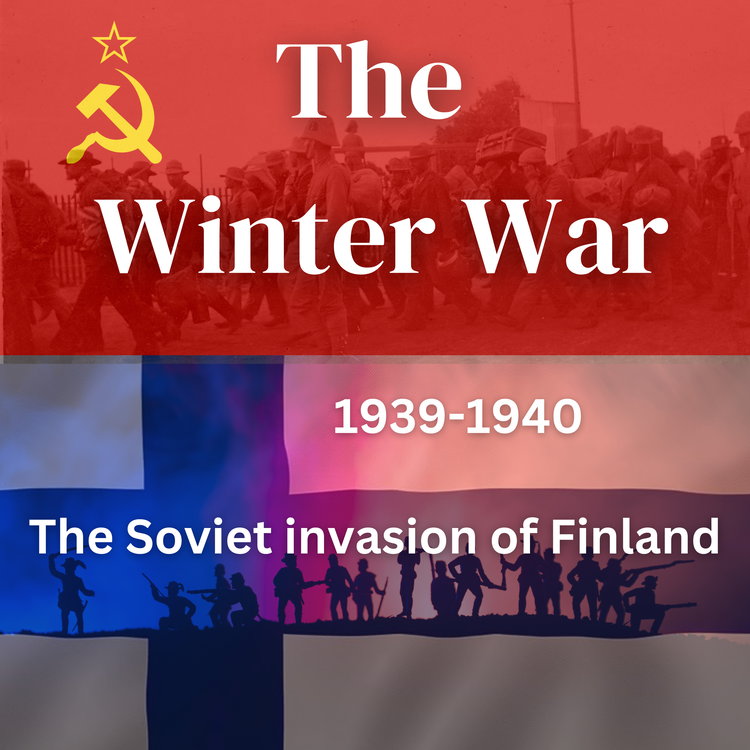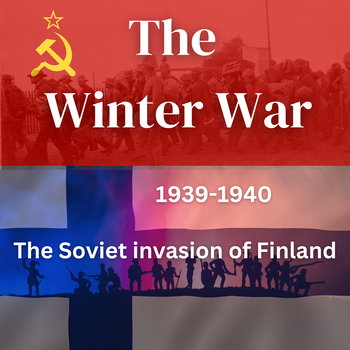
Episode 8 - The Red Air Force flops but Gusevski proves a worthy opponent
Loading player...
This is episode 8 and we’re into the second week of January 1940.
The Russian invasion of Finland has hit a roadblock. It is a corner of Europe insulated through much of the year by ice. Historically, as Eric Dancy noted in a fantastic analysis published in 1946, she was a great prize and a battlefield initially for Sweden and Russia — until the Germans replaced the Swedes as the principal enemies of the Russians, when she became a flank for the new battlefield. Up until then, the Finns were presumed to have let’s say, an underdeveloped political instinct, preferring to seek brave or astute individual leaders to defend them in their unfortunate geographical position.
What we need to remember is that the Finns actually migrated into Finland from the north Caspian countryside, late in the first millenium and drove the Lapps north across the Arctic Circle.
The area had been repeatedly assailed - Sweden, then Napoleon, then the Russians.The blizzards that had lashed Lapland were some of the most potent ever recorded and the Russian invasion here had ground to a halt, it was averaging minus 35 centigrade and the Red Army had been stopped at a little village called Nautsi which was close to the Norwegian border in the West.
There were now over ten thousand Russian troops stuck along this road, all the way to Petsamo in the east, held up by the weather and around 2000 Finnish troops.
However, Russian General Gusevski further south who commanded the 54th Division understood the dangers and the territory. He had summed up the situation around Suomussalmi and decided to alter tactics. For one thing he had trained his men to use skis and how to survive in the frozen wilderness, their morale was a notch above all other Red Army soldiers. When we last heard about Gusevski, he was driving westwards on along routes south of Suomussalmi and had reached Kuhmo village.
At the start of the Russian invasion in November 1939, the Finnish Air Force had a grand total of 18 Bristol Blenheim bombers and 46 fighters, 32 modern Fokker D.XXIs and 14 obsolete Bristol Bulldogs. There were also 58 liaison aircraft, but 20 of these were only used for messengers.
The Soviet Union on the other hand had an estimated 5,000 aircraft and of these at least 700 fighters and 800 medium bombers came to the Finnish front to support the Red Army's operations.
The Russians were determined to smash Finnish infrastructure but their bombing campaigns were a failure. The Red Air Force took aim in particular at the railway lines, but these would be fixed within a few hours of their being hit by the bombing raids. The Russians also bombed small village depots, splintering them to bits but as historian William Trotter notes in his book A Frozen Hell, it was like using a shotgun to kill a gnat.
The Russian invasion of Finland has hit a roadblock. It is a corner of Europe insulated through much of the year by ice. Historically, as Eric Dancy noted in a fantastic analysis published in 1946, she was a great prize and a battlefield initially for Sweden and Russia — until the Germans replaced the Swedes as the principal enemies of the Russians, when she became a flank for the new battlefield. Up until then, the Finns were presumed to have let’s say, an underdeveloped political instinct, preferring to seek brave or astute individual leaders to defend them in their unfortunate geographical position.
What we need to remember is that the Finns actually migrated into Finland from the north Caspian countryside, late in the first millenium and drove the Lapps north across the Arctic Circle.
The area had been repeatedly assailed - Sweden, then Napoleon, then the Russians.The blizzards that had lashed Lapland were some of the most potent ever recorded and the Russian invasion here had ground to a halt, it was averaging minus 35 centigrade and the Red Army had been stopped at a little village called Nautsi which was close to the Norwegian border in the West.
There were now over ten thousand Russian troops stuck along this road, all the way to Petsamo in the east, held up by the weather and around 2000 Finnish troops.
However, Russian General Gusevski further south who commanded the 54th Division understood the dangers and the territory. He had summed up the situation around Suomussalmi and decided to alter tactics. For one thing he had trained his men to use skis and how to survive in the frozen wilderness, their morale was a notch above all other Red Army soldiers. When we last heard about Gusevski, he was driving westwards on along routes south of Suomussalmi and had reached Kuhmo village.
At the start of the Russian invasion in November 1939, the Finnish Air Force had a grand total of 18 Bristol Blenheim bombers and 46 fighters, 32 modern Fokker D.XXIs and 14 obsolete Bristol Bulldogs. There were also 58 liaison aircraft, but 20 of these were only used for messengers.
The Soviet Union on the other hand had an estimated 5,000 aircraft and of these at least 700 fighters and 800 medium bombers came to the Finnish front to support the Red Army's operations.
The Russians were determined to smash Finnish infrastructure but their bombing campaigns were a failure. The Red Air Force took aim in particular at the railway lines, but these would be fixed within a few hours of their being hit by the bombing raids. The Russians also bombed small village depots, splintering them to bits but as historian William Trotter notes in his book A Frozen Hell, it was like using a shotgun to kill a gnat.

